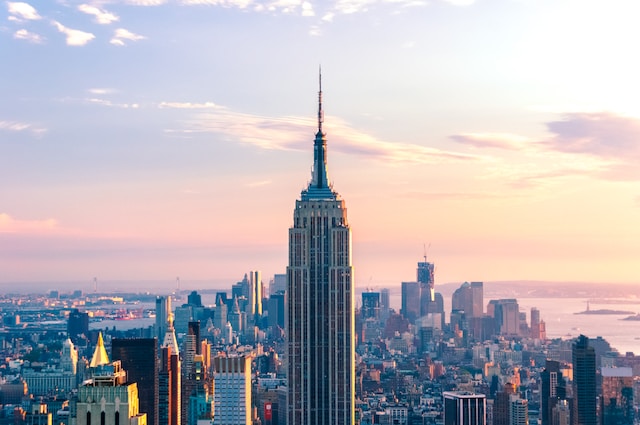Beaux art is more concerned with traditional ideas of beauty while art deco is more concerned with modern ideas of beauty.
What is beaux art?
(Photo by Nathan Staz on Unsplash )

Beaux-Arts is a French term that translates to “fine arts” or “beautiful arts.” It is an academic style of architecture, interior design, and decorative arts that emerged in France in the late 19th century and was popular in the United States until the 1930s.
The Beaux-Arts style was characterized by its grandeur, elegance, and classical ornamentation. It emphasized the use of traditional materials, such as stone, marble, and bronze, and often featured elaborate façades with sculptural decorations, colonnades, and grand staircases.
Beaux-Arts architecture also placed a strong emphasis on symmetry and proportion, and often featured domes, cupolas, and other classical elements. The style was heavily influenced by the French Ecole des Beaux-Arts, which emphasized the study of classical architecture and design principles.
In the United States, the Beaux-Arts style became popular during the late 19th and early 20th centuries, particularly for public buildings such as museums, libraries, and government buildings. Examples of Beaux-Arts architecture in the United States include the New York Public Library, the Metropolitan Museum of Art, and the U.S. Supreme Court Building in Washington, D.C.
In addition to architecture, the Beaux-Arts style also had a significant influence on interior design and decorative arts. It was characterized by its use of luxurious materials, such as silk, velvet, and damask, and often featured ornate furniture, decorative moldings, and chandeliers.
Overall, the Beaux-Arts style represented a grand and opulent approach to architecture and design, which emphasized classical principles and traditional materials.
What is art deco?
(Photo by Kit Suman on Unsplash )

Art Deco is an influential design style that emerged in the 1920s and 1930s, primarily in Europe and the United States. It is characterized by its bold geometric shapes, streamlined forms, and a futuristic aesthetic that reflects the optimism of the period.
Art Deco was heavily influenced by several different art movements, including Cubism, Futurism, and Constructivism, as well as the design aesthetics of ancient Egyptian, African, and American Indian cultures. It represented a departure from the ornate and highly decorative styles that had dominated the preceding Art Nouveau period.
The style was characterized by its use of bold, geometric shapes and patterns, such as zigzags, chevrons, and sunbursts. It often incorporated highly polished and reflective materials, such as chrome, glass, and marble, which conveyed a sense of luxury and glamour.
In addition to architecture, the Art Deco style also had a significant influence on the design of furniture, textiles, jewelry, and other decorative arts. It often featured highly stylized and abstract motifs, such as machine-like forms and stylized animal figures.
Art Deco was popularized by the 1925 Exposition Internationale des Arts Décoratifs et Industriels Modernes in Paris, where it was showcased as a new modern style. It quickly spread throughout Europe and the United States and became a dominant style in the design of buildings, interiors, and everyday objects.
Today, Art Deco remains a highly recognizable and influential design style that continues to inspire artists, designers, and architects around the world.
Famous beaux-art buildings
Beaux-Arts architecture is a style that was popular in the United States and Europe during the late 19th and early 20th centuries. It is characterized by grandiose and monumental designs, intricate detailing, and the use of classical forms and motifs. Here are some examples of famous Beaux-Arts buildings:
- The Grand Palais, Paris – This building was constructed for the 1900 World’s Fair and is one of the most iconic examples of Beaux-Arts architecture. It features a grand glass roof and ornate sculptures.
- The New York Public Library, New York City – This building was designed by Carrère and Hastings and completed in 1911. It features a grand entrance hall, a marble staircase, and a massive reading room.
- The Paris Opera House, Paris – This building was designed by Charles Garnier and completed in 1875. It is known for its ornate façade, grand staircase, and richly decorated interior.
- The Palacio de Bellas Artes, Mexico City – This building was designed by Italian architect Adamo Boari and completed in 1934. It features a domed roof and intricate detailing inspired by Aztec and Mayan art.
- The Union Station, Washington D.C. – This Beaux-Arts building was completed in 1908 and served as a train station until the 1980s. It features a grand entrance hall and ornate details throughout the interior and exterior.
- The Basilica of the Sacred Heart, Paris – This basilica was designed by Paul Abadie and completed in 1914. It features a massive dome, intricate mosaics, and numerous sculptures.
- The San Francisco City Hall, San Francisco – This Beaux-Arts building was completed in 1915 and features a grand entrance, a rotunda with a dome, and marble-clad interior spaces.
- The Buenos Aires Law School, Buenos Aires – This building was designed by Argentine architect Francisco Tamburini and completed in 1949. It features a grand façade with ornate sculptures and a central courtyard.
These are just a few examples of the many famous Beaux-Arts buildings around the world.
Famous art deco buildings
Art Deco was a popular architectural style that flourished in the 1920s and 1930s. It is characterized by bold geometric shapes, lavish ornamentation, and the use of industrial materials such as steel and glass. Here are some examples of famous Art Deco buildings:
- Empire State Building, New York City – Completed in 1931, the Empire State Building is one of the most famous Art Deco skyscrapers in the world. It features a stepped profile, decorative spandrels, and a grand entrance lobby.
- Chrysler Building, New York City – Completed in 1930, the Chrysler Building is another iconic Art Deco skyscraper in New York City. It features a distinctive crown of stainless steel arches, ornate eagles, and other decorative elements.
- The Hoover Building, London – Completed in 1935, the Hoover Building is a prominent Art Deco landmark in London. It was designed by Wallis, Gilbert and Partners and features a distinctive façade with colorful tiles and decorative reliefs.
- The Radio City Music Hall, New York City – Opened in 1932, the Radio City Music Hall is a prime example of Art Deco interior design. It features a grand entrance lobby with decorative reliefs, a spacious auditorium with a sweeping stage, and a spectacular ceiling mural.
- The Palacio de Bellas Artes, Mexico City – Completed in 1934, the Palacio de Bellas Artes is an Art Deco palace of fine arts. It was designed by Italian architect Adamo Boari and features a distinctive dome covered in stained glass.
- The Ocean Drive, Miami – This is a street in South Beach, Miami, lined with many Art Deco buildings. Built in the 1920s and 1930s, these buildings feature pastel colors, geometric shapes, and decorative details.
- The Fisher Building, Detroit – Completed in 1928, the Fisher Building is a prominent Art Deco skyscraper in Detroit. It features a grand entrance lobby with marble floors and ornate ceilings, as well as numerous decorative details throughout the building.
- The Daily Express Building, Manchester – Completed in 1939, the Daily Express Building is an Art Deco landmark in Manchester, England. It features a distinctive façade with colorful tiles, decorative motifs, and a prominent clock tower.
These are just a few examples of the many famous Art Deco buildings around the world.
What are the types of Art Deco?
There is no one definitive answer to the question of the types of Art Deco, as there is much variation and overlap in the various interpretations of the style. However, some design historians have identified three broad categories of Art Deco:
- Zigzag Art Deco – characterized by the use of geometric shapes, particularly zigzags and chevrons, and bold contrasting colors. This style was popular in the late 1920s and early 1930s and was used in both architecture and decorative arts.
- Streamline Art Deco – characterized by smooth, aerodynamic lines and the use of curved forms, often inspired by the machine age and the design of transportation vehicles such as cars, trains, and airplanes. This style was popular in the mid-to-late 1930s and was used in architecture, product design, and graphic design.
- Classical Art Deco – characterized by a more traditional, ornamental style that incorporated classical motifs such as columns, friezes, and urns, often combined with modern materials and designs. This style was popular in the early-to-mid 1930s and was used in architecture, interior design, and decorative arts.
It should be noted that these categories are not mutually exclusive, and many Art Deco designs combine elements from different styles. Additionally, the style evolved and changed over time, adapting to new technologies, materials, and cultural influences.
Featured Image by ASIF ALTAF








